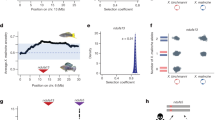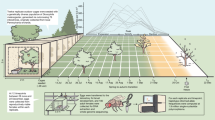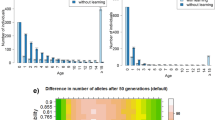Abstract
A GENERAL pattern that emerges from electrophoretic analyses of protein variation in natural populations is that alleles with intermediate frequencies are rare. This results, graphically, in a U-shaped frequency distribution when both allele frequencies from a two-allele locus are plotted. Supporters of the neutralist theory of population variation believe that most protein polymorphisms found in nature are the result of the random drift of neutral mutations and argue that a U-shaped distribution is expected for the case 4Ns < 1, where N is the population size of diploid organisms and s is the average selection coefficient. We show here that, under certain assumptions, a U-shaped frequency distribution also obtains when 4Ns > 1. From this we conclude that the analysis of allele frequency distributions (or, equivalently, relative contributions to heterozygosity) does not provide a sensitive means of resolving the neutralist and selectionist controversy.
This is a preview of subscription content, access via your institution
Access options
Subscribe to this journal
Receive 51 print issues and online access
$199.00 per year
only $3.90 per issue
Buy this article
- Purchase on SpringerLink
- Instant access to full article PDF
Prices may be subject to local taxes which are calculated during checkout
Similar content being viewed by others
References
Robertson, A., Genetics, 47, 1291–1300 (1962).
Yamazaki, T., and Maruyama, T., Science, 178, 56–58 (1972).
Author information
Authors and Affiliations
Rights and permissions
About this article
Cite this article
GILPIN, M., SOULÉ, M., ONDRICEK, A. et al. Overdominance and U-shaped gene frequency distributions. Nature 263, 497–499 (1976). https://doi.org/10.1038/263497a0
Received:
Accepted:
Issue date:
DOI: https://doi.org/10.1038/263497a0
This article is cited by
-
Interspecific isozymic substitution is not random
Heredity (1992)
-
U-shaped gene frequency distributions
Nature (1977)



